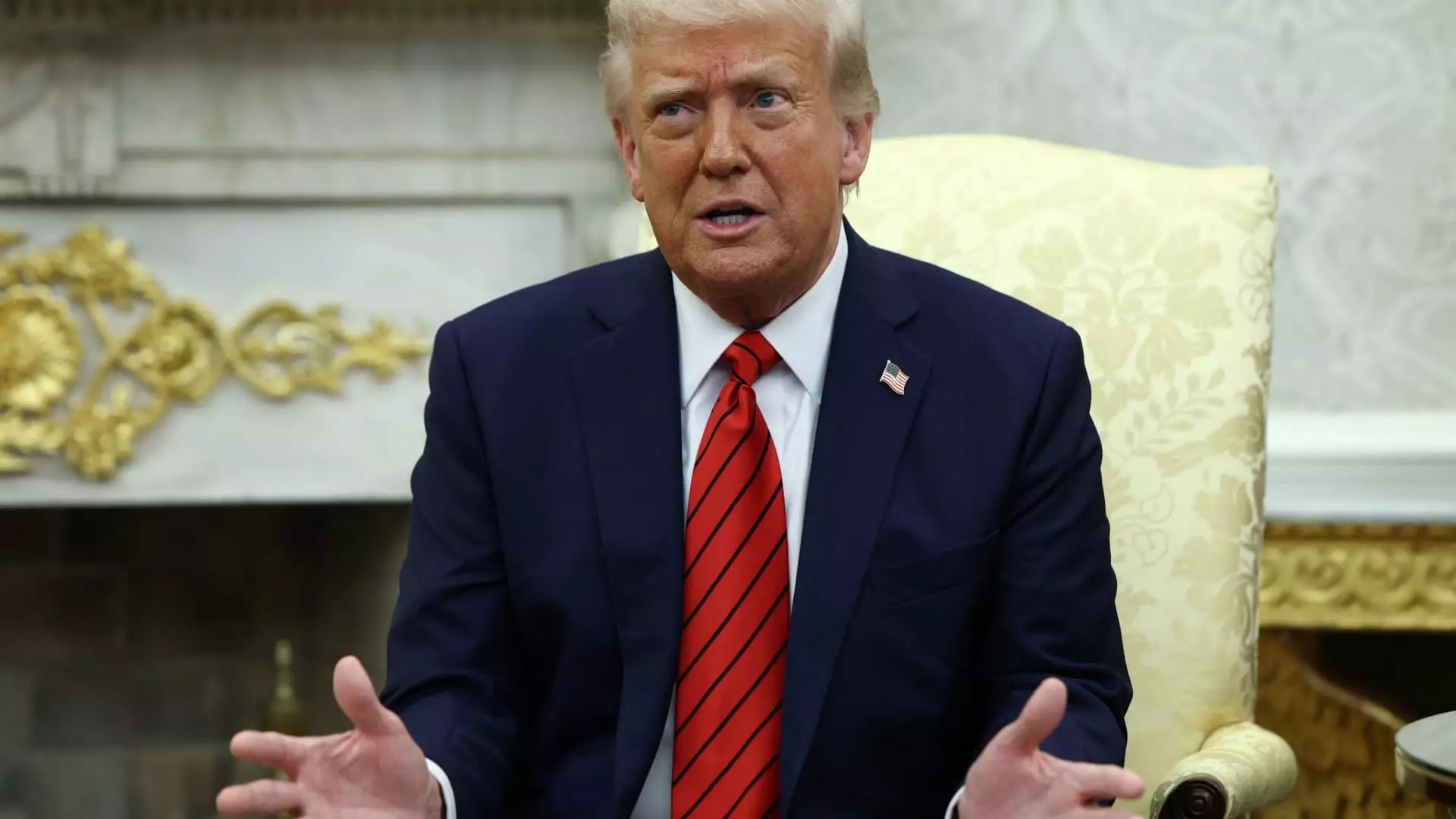Investors often tread carefully around tariffs, particularly when potential impacts remain openly speculative. When President Donald Trump announced his “reciprocal” tariffs on April 2, it ignited a collective panic among stakeholders in the stock market. Initially, investors were taken aback, worried about the potential ramifications on individual stocks, many of which had been soaring before the announcement. Despite the initial shock subsiding, the lingering effects of uncertainty cast a long shadow over trading floors, revealing how interconnected global trade and stock performance truly are.
As the second week came to a close, no new trade arrangements had emerged, despite claims from the White House that discussions with countries, such as Japan, were ongoing. This uncertainty is troubling; it reveals how fragile the stability of the market can be, hinging not only on trade agreements but also on the underlying health of individual sectors. When major companies like Nvidia announce staggering financial losses related to export restrictions—like the $5.5 billion charge linked to their H20 processors—it raises questions not just about company strategy but about the regulatory landscape’s unpredictability. Investors may find themselves grappling with the unpredictability that today’s policies inflict on tomorrow’s profits.
The Ripple Effect: Companies in the Crosshairs
The anxiety surrounding tariff discussions isn’t merely speculative; it raises tangible concerns over how trade decisions intersect with corporate realities. The severe drop in Nvidia’s stock following their financial disclosures exemplifies how policymakers’ moves can substantially influence the market. If one company can falter so dramatically due to government policy, it’s reasonable to ask which giant might be next. This peril remains especially potent for firms that export products, thereby making their fates susceptible to the caprice of trade negotiations and tariffs aimed at sectors that may not even be part of the discussion.
Importantly, the opacity of negotiations creates a perplexing dilemma for investors, hampering their ability to make informed decisions. Trump’s negotiations can incorporate a plethora of complicated factors, such as infrastructure financing or tech acquisition, disallowing a straightforward understanding of which sectors might suffer or thrive in upcoming trade deals. The ambiguity leaves investors in a precarious position as they weigh the risks associated with their portfolios.
The Impact of Global Investor Sentiment
Beyond individual stocks, the broader question of global investor sentiment swirls ominously in the context of the current trade debates. As international stakeholders seem to shift away from U.S. assets, immigration of investment capital could tighten, which in turn would exacerbate volatility in the stock market. Lawrence McDonald of Bear Traps Report emphasizes that while localized retail interest may be insulated from immediate fallout, the long-term implications for substantial global capital flows could be dire.
This trending shift could lead to significant repercussions for U.S. equities. The “stop-start” approach to trade negotiations prioritizes domestic markets yet risks alienating larger international players who may see U.S. unpredictability as too great a risk. When the largest players in the global economy begin to retreat, domino effects on domestic companies could cascade across multiple sectors.
Earnings Season: The Define or Die Moment
As corporations navigate through earnings seasons amid a backdrop of trade tension, the stakes are especially high. Analysts and investors are keenly tuned into how executive teams communicate their outlooks in the context of shifting tariff policies. Some companies may take the safe route—providing dual forecasts that hedge against uncertainty—while others may opt to keep their projections quiet, revealing the sheer dilemma they face. This paralysis could stifle innovation and investment for fear of overexposing their vulnerabilities in adverse trade conditions.
As Adam Parker from Trivariate Research observes, the market has become unforgiving; downward revisions in earnings per share (EPS) can provoke aggressive sell-offs. His findings point out the current climate as one in which revision penalties have become brutal, ranking in the lowest percentile compared to historical data. This trend underscores the precarious position that companies are in—both to meet investor expectations and shield themselves from political fallout.
In this somber trading environment, it’s easy for investors to feel like pawns in a game orchestrated by policymaking elites. With each tariff-driven headline, the fragility of individual stocks becomes more pronounced. The ongoing turbulence illustrates some deeper truths about the connection between politics and market performance, revealing the fraught landscape where economic growth becomes a hostage of trade wars and government predictions. The question shifts from whether there will be negotiation outcomes to how dramatically existing policies will continue to shake investor confidence, shaping individual portfolios in exponential and unpredictable ways.


Leave a Reply